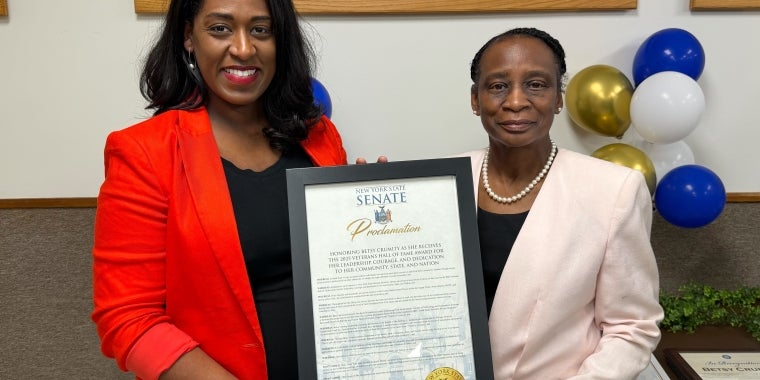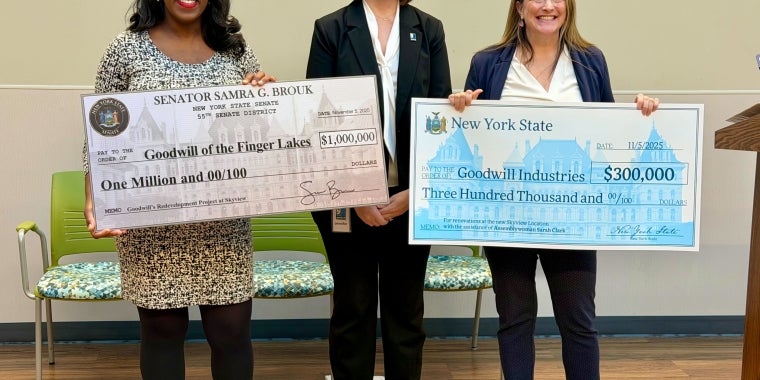
Erie Canal Letter from Sen Brouk, AM Clark & AM Lunsford
September 21, 2021

Dear Messrs. Koelmel and Quinones,
When one visualizes the Erie Canal, they no longer think of steamboats and mules hauling goods across our state. Instead, we recognize a living piece of history- one that is home to wildlife, families spending quality recreational time, and tourists who want to experience the awe of the canal. The natural beauty of the Erie Canal has proven attractive to homeowners in the area and has helped local businesses attract and retain a robust customer base.
As such, we are committed to protecting the Erie Canal as it is now used and enjoyed by local residents. Based on the clear cutting that has happened in recent years at the hands of the Canal Corporation (“Canal Corp”), there is a breakdown in trust between members of the public who regularly enjoy the Erie Canal and the Canal Corp.
Canal Corp must work to rebuild trust with the public.
There is significant public concern that Canal Corp’s proposed Earthen Embankment Integrity Program (“EEIP”), particularly as it pertains to tree management in the Greater Rochester area, will again disregard public input and the values of local stakeholders. Local communities have concerns ranging on topics like the efficacy of clear cutting, its impacts on the climate, and resulting effects on local businesses and homeowners.
Thank you for extending the comment period and adding virtual and in-person information sessions to ensure that the public has the opportunity to fully understand and weigh in on the program. Canal Corp’s willingness to engage in increased public communications is a vital step in rebuilding the trust with the community.
In order to make another significant step in rebuilding trust and avoiding the mistakes of the previous EEIP, we urge the formation of a Citizen Advisory Board made up of relevant community stakeholders to help with final maintenance plans in each project area. Such a board’s membership should be composed of residents and business owners in the proposed affected areas. This will give voice to the community and help educate some credible messengers about the real problems underlying the need for the EEIP. It also helps achieve step 4 of the Maintenance Solutions Decision Tree, which is “Engage with stakeholders based on specific thresholds identified” in a meaningful way as, notably, this is the first mention of stakeholders and it is on page 88 of the 91-page Embankment Inspection & Maintenance Guide Book and absolutely no further information is included.
We call for the creation and publication of a clear timetable of the announcement of final maintenance plans for each affected area. Canal Corp has told us that the EEIP will be implemented in phases and that there is no work planned for 2021, but this has not been clearly communicated to the public. There are legitimate fears among the public that tree removal will begin immediately after the public comment period closes. This additional material will be especially important to constituents and municipal leaders who need clarity about how and when specific, local, vegetation maintenance projects will be developed, proposed, and executed. As we have learned this year, “generic” statements and plans do little to help the general public understand and trust Canal Corp’s plans for maintenance and tree removal in their neighborhood.
We further strongly urge the inclusion of a public comment period on the actual, final maintenance plan in each area. Currently, it appears that there is absolutely no opportunity for community input on the maintenance projects where a “Regulatory or Community Threshold” is not met – simply an adherence to the “Embankment Maintenance Best Management Practices,” which are overly-technical and written in language that is unfamiliar with the overwhelming majority of people. Absent a Threshold, the only enumerated steps of public communications are “Notification to adjacent property owners” and “Notification to local municipalities if necessary.” This is unacceptable, and information about exactly how much notice and input local communities will have on local management projects is of paramount importance.
Additionally, we have reviewed the materials made available on the Canal Corporation’s website, but believe there are significant lapses in information relating to future public relations and community outreach when specific projects are identified. Significantly, there appears to be a concerning lack of understanding about the truly integrated nature of the Erie Canal – that thousands of New Yorkers live and work canalside and will be greatly impacted by the EEIP.
The Embankment Inspection & Maintenance Guide Book (“Guide Book”) fails to recognize the importance and value of canalside neighborhoods. While it states that “[t]here are site-specific situations where the proposed maintenance activities would result in significant social, economic, and environmental impacts,” the current enumerated “Regulatory and Community Thresholds” in Table 8.15-1 are insufficient.
The current thresholds fail to recognize the fact that a significant portion of land affected by the EEIP is residential property. As it currently stands, the residential nature of the impacted land is deemed irrelevant unless that residential area is an “historic resource” or an “aesthetic resource of local importance.” Similarly, there is a complete lack of “Regulatory and Community Thresholds” in Table 8.15-1 that address the potential impact the EEIP will have on the economies of canalside communities.
As you are no doubt aware, homeowners and occupants of canalside residences make significant investments in these properties because of the beauty of the Erie Canal and its embankments. Owners and operators of canalside businesses make similar investments to attract local and visiting customers; and the Erie Canal is a recognized economic driver throughout New York, especially in the tourism industry. Any impact to this, such as that contemplated under the EEIP, must involve input from the affected community – it not only affects the nature of these communities, but also impacts their economies in terms of property values and tourism.
Indeed, the threshold of “[w]here an aesthetic resource of local importance has previously been identified through an adopted comprehensive plan or zoning and is located on lands where EEIP activities are contemplated and those activities would significantly damage the aesthetic character of the resource” comes close, but a municipality need not to have adopted an official policy in order to recognize the value of its canalside neighborhoods. Accordingly, the “Community Thresholds” must be amended to include a threshold where a significant amount of residential or business properties are located in the proposed affected areas.
Lastly, we want to be direct – clear cutting the trees along the Erie Canal should be viewed as the absolute last resort after a purposeful review process that takes public input into meaningful consideration. Gorgeous, shade-giving, erosion-preventing, life-sustaining trees have thrived along the Erie Canal for generations and are now an integral part of our Upstate and Western New York way of life.
Thank you for your consideration and we look forward to working closely with you in the coming months and years.
Best,
Senator Samra Brouk (SD-55)
Assemblymember Jennifer Lunsford (AM-135)
Assemblymember Sarah Clark (AM-136)
Share this Article or Press Release
Newsroom
Go to Newsroom


